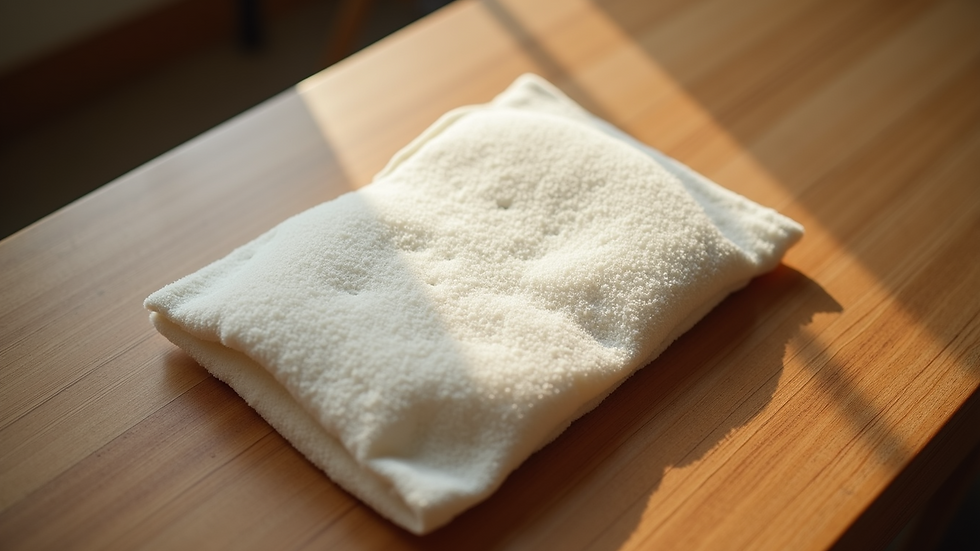Effective Strategies for Managing Chronic Pain in Older Adults
- Dare Olagunju

- Oct 15
- 3 min read
Chronic pain is a common challenge faced by many older adults. It can affect daily activities, mood, and overall quality of life. Managing this pain effectively requires a combination of approaches tailored to the individual's needs. This article explores practical strategies to help older adults live more comfortably and maintain their independence despite chronic pain.
Understanding Pain Management in Older Adults
Pain management in older adults involves more than just taking medication. It requires a comprehensive approach that addresses physical, emotional, and social factors. Older adults often experience pain from conditions such as arthritis, neuropathy, or past injuries. The goal is to reduce pain intensity, improve function, and enhance well-being.
Some key aspects of pain management include:
Assessment: Regular evaluation of pain type, intensity, and impact on daily life.
Medication: Using appropriate drugs while minimizing side effects.
Physical therapy: Exercises and treatments to improve mobility and reduce pain.
Psychological support: Techniques to manage stress and emotional responses to pain.
By combining these methods, older adults can achieve better control over their pain and enjoy a higher quality of life.

Practical Approaches to Pain Management
There are several effective strategies that older adults can use to manage chronic pain. These approaches can be personalized based on the individual's health status and preferences.
1. Medication Management
Medications can be helpful but must be used carefully. Older adults are more sensitive to side effects, so doctors often start with low doses. Common medications include:
Acetaminophen: Often the first choice for mild to moderate pain.
Nonsteroidal anti-inflammatory drugs (NSAIDs): Useful for inflammation but should be used cautiously.
Topical treatments: Creams or patches applied directly to the painful area.
Opioids: Reserved for severe pain and used under strict medical supervision.
Always consult a healthcare provider before starting or changing any medication.
2. Physical Activity and Therapy
Regular movement helps maintain joint flexibility and muscle strength. Physical therapy can provide tailored exercises that reduce pain and improve function. Activities such as walking, swimming, or gentle yoga are often recommended.
3. Lifestyle Modifications
Simple changes can make a big difference:
Maintaining a healthy weight to reduce joint stress.
Using assistive devices like canes or walkers to improve mobility.
Ensuring a comfortable living environment with proper seating and bedding.
4. Psychological and Social Support
Chronic pain can lead to feelings of isolation or depression. Support groups, counseling, and relaxation techniques like meditation or deep breathing can help manage the emotional impact of pain.
For more detailed information on pain management for elderly, visiting specialized physical therapy centers can provide personalized care plans.

What are the 5 A's of pain management?
The 5 A's provide a useful framework for managing chronic pain effectively. They help healthcare providers and patients focus on key areas:
Analgesia: Achieving adequate pain relief through medications or other treatments.
Activities: Encouraging participation in daily activities and exercise.
Adverse effects: Monitoring and minimizing side effects of treatments.
Affect: Addressing emotional and psychological aspects of pain.
Aberrant drug-related behaviors: Preventing misuse or dependency on pain medications.
Understanding and applying these principles can improve outcomes and ensure a balanced approach to pain management.
Integrating Complementary Therapies
In addition to conventional treatments, many older adults find relief through complementary therapies. These can be used alongside medical care to enhance pain control.
Acupuncture: Inserting thin needles at specific points to reduce pain signals.
Massage therapy: Relieving muscle tension and improving circulation.
Heat and cold therapy: Applying warm or cold packs to soothe painful areas.
Mind-body techniques: Practices like tai chi or guided imagery to promote relaxation.
These therapies should be discussed with healthcare providers to ensure safety and effectiveness.

Encouraging Self-Management and Education
Empowering older adults to take an active role in their pain management is crucial. Education about pain, treatment options, and coping strategies helps build confidence and independence.
Tips for self-management include:
Keeping a pain diary to track triggers and relief methods.
Setting realistic goals for activity and rest.
Learning relaxation and breathing exercises.
Communicating openly with healthcare providers about pain levels and treatment effects.
By staying informed and proactive, older adults can better navigate the challenges of chronic pain.
Moving Forward with Confidence
Managing chronic pain in older adults is a multifaceted process that requires patience and persistence. Combining medical treatments, physical activity, psychological support, and lifestyle changes can lead to meaningful improvements. Remember, effective pain management is about enhancing quality of life and maintaining independence.
If you or a loved one is struggling with chronic pain, consider reaching out to us at Onward Home Physical Therapy. With the right support and strategies, living well with chronic pain is possible.




Comments